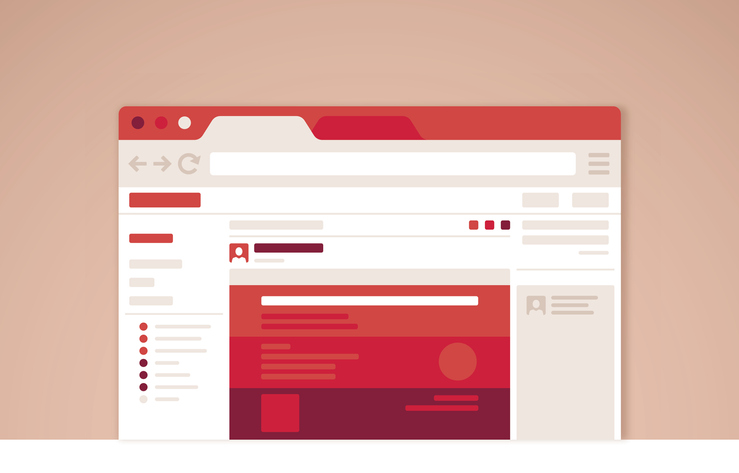Physical Address
304 North Cardinal St.
Dorchester Center, MA 02124

The average web visitor only skims your homepage for a few seconds before deciding whether to leave or stay. Is your website logo optimized to grab attention?
Display your business logo in the right places to engage your audience. Logos are one of the first touchpoints with your brand. They offer new site visitors a sense of your brand personality. Yet, proper logo placement isn’t just about making a creative statement. Website visitors automatically scan specific parts of a webpage to find the information they need.
When you put your logo in optimal locations, visitors are more likely to remember your branding. Use the power of visuals to make quick connections and leave a lasting impression on potential customers. Here are the best places to show off your website logo.

Think of a header as your website’s welcome mat. The header invites people to learn more about your business, providing links to the most important pages on your site. Since the header is typically visible on every page, visitors will see your logo no matter where they enter your site.
The internet is full of examples of beautiful website design, so it’s easy to get caught up looking for the most attractive or edgy templates. But keep in mind, people in Western cultures read from left to right. A reader’s gaze naturally goes to the top left side of a page.
The website footer is information central. Think about how often you head straight to the bottom of a webpage to track down a company profile, sitemap, or contact details. A typical footer has a breakdown of subpages that are vital for users who want more in-depth information about a business.
The bigger your footer, the more beneficial it is to include branding elements. Businesses with an extensive directory often have a footer that expands as you scroll over it. The expanded menu may even cover most of the page. So users could potentially spend a lot of time looking at a footer. Keep your brand top of mind by making sure your logo remains visible for the entire visit.
Planning to include a splash page on your site? A splash page is a cover page that either welcomes your visitors or provides vital information that everyone needs before entering the site. Unlike a landing page, a splash page is focused on delivering a message without one specific conversion goal in mind.
Splash pages are common for sites that contain adult content, such as alcohol, and require users to verify their age before proceeding. Another typical example is artist or entertainment sites that greet you with a creative illustration, multimedia, or interactive menu. Many restaurants, clothing stores, and startups also use splash pages to introduce a flagship product, collection, or service.
If you have a splash page, it gets viewed even before the header. The majority of designs are centered on the page with a distinct focal point, so you have the visitor’s complete attention. That’s why splash pages are a great place to showcase your logo and connect with people as soon as they land on your website.
The About and How it Works sections of your website are where you promote your brand the most. These pages deliver your value proposition, showing people how your brand stands out from the crowd. Having a logo on the page reinforces your visual identity while visitors are learning about your brand qualities.
You can be more flexible and creative with how your branding is presented on these pages, especially if you have a mascot logo. Take a look at how the ClassDojo website creates a fun, vibrant Learn More page by incorporating the mascot. Look for ways to make your logo interact with other elements on the page.
It’s smart to design multiple variations of a logomark, whether you plan to hire a designer or get a free website logo. Don’t go overboard and stick your logo everywhere. Try to subtly integrate the visual characteristics of your logo throughout your website design.
Consider how the website for the Rotterdam Philharmonic Orchestra uses the shape of the business logo for backgrounds, menus, photo frames, and social media buttons.
Approach website design the same way you would decorate a home. What message do you want visitors to get as they travel through your site? How can you use your logo to create a unique aesthetic that people immediately associate with your brand? Focus on putting your brandmark in the most prominent spots on your website first. Then, strengthen your brand by featuring your website logo in unexpected places.